Garlic Butter Prime Rib is slathered in delicious flavorful garlic herb butter and roasted to perfection in the oven. This amazing prime rib recipe is show-stopping delicious for a memorable meal on special occasions.
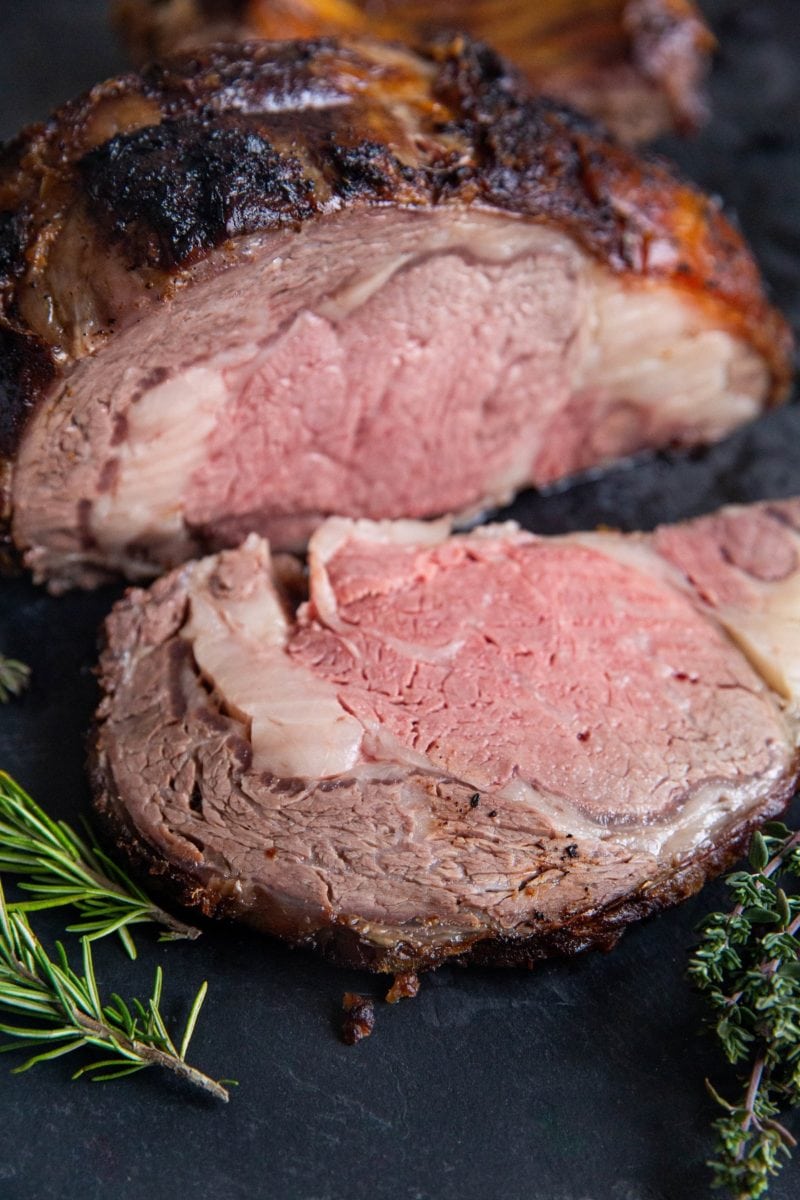
Any time you’re hunting for an impressive main dish to serve guests, let prime rib be your guiding light.
Making prime rib for Christmas dinner or any gathering during the holiday season is a surefire way of delighting your guests.
As I mentioned in my Prime Rib Recipe, this amazing cut of beef is so rich and tender that it doesn’t need anything more than salt and a perfect cook to make it taste amazing.
In spite of the fact that I typically keep it simple when it comes to meat, lathering a prime rib roast with homemade garlic herb compound butter just sends an already gorgeous meal to another dimension. The crispy herb crust surrounding the perfectly cooked meat is simply sensational.
While preparing this expensive cut of meat can seem intimidating, I assure you the process is simple.
As long as you keep an eye on the internal temperature by using a good meat thermometer to ensure you’re ending up with the level of doneness you want, you’re guaranteed an amazing result.
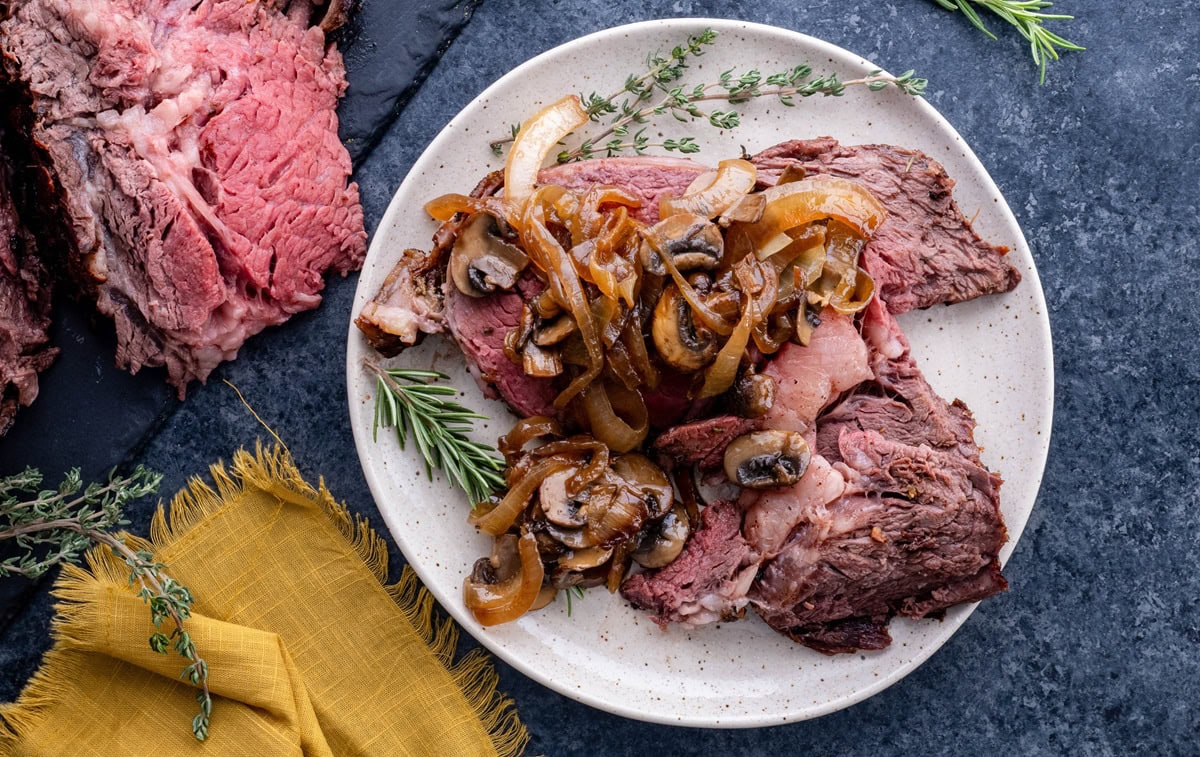
This easy prime rib recipe includes everything you need to know in order to make the best prime rib that will receive high praise.
Let’s dive into the details!
What is Cut of Meat is Prime Rib?
Also known as standing rib roast or ribeye roast, prime rib roast comes from the middle section of the cow’s ribcage.
You can buy a bone-in roast or boneless prime rib roast, and it can be sold anywhere from 3 pounds to 25 pounds, depending on how many ribs and how much meat you’re buying.
Ribeye steaks are cut from the prime rib section of the cow. This means once your standing rib roast is cooked and you slice it into individual steaks, you’re essentially cutting ribeye steaks for your guests.
During the holidays, your local grocery store will likely carry prime rib. If you have a difficult time finding it in the meat section, you can ask the store’s butcher how to find it.
How Many People Does a 5-Pound Prime Rib Serve?:
A butcher will tell you to allot 1 bone per two people, so if your roast has 3 bones, it should feed 6 people. I think a better way of looking at it is to buy 1 pound of meat per person.
I know it sounds like a lot. But just think: you’re losing some of the weight to the bone (assuming you’re buying a bone in roast), and also some water weight through the cooking process.
Also keep in mind that not everyone will eat all of the fat, so there may be some waste there too.
In this sense, a 5-pound prime rib will comfortably feed 5 people. Just be sure to include some delicious refreshing side dishes to offset the richness of the meal!
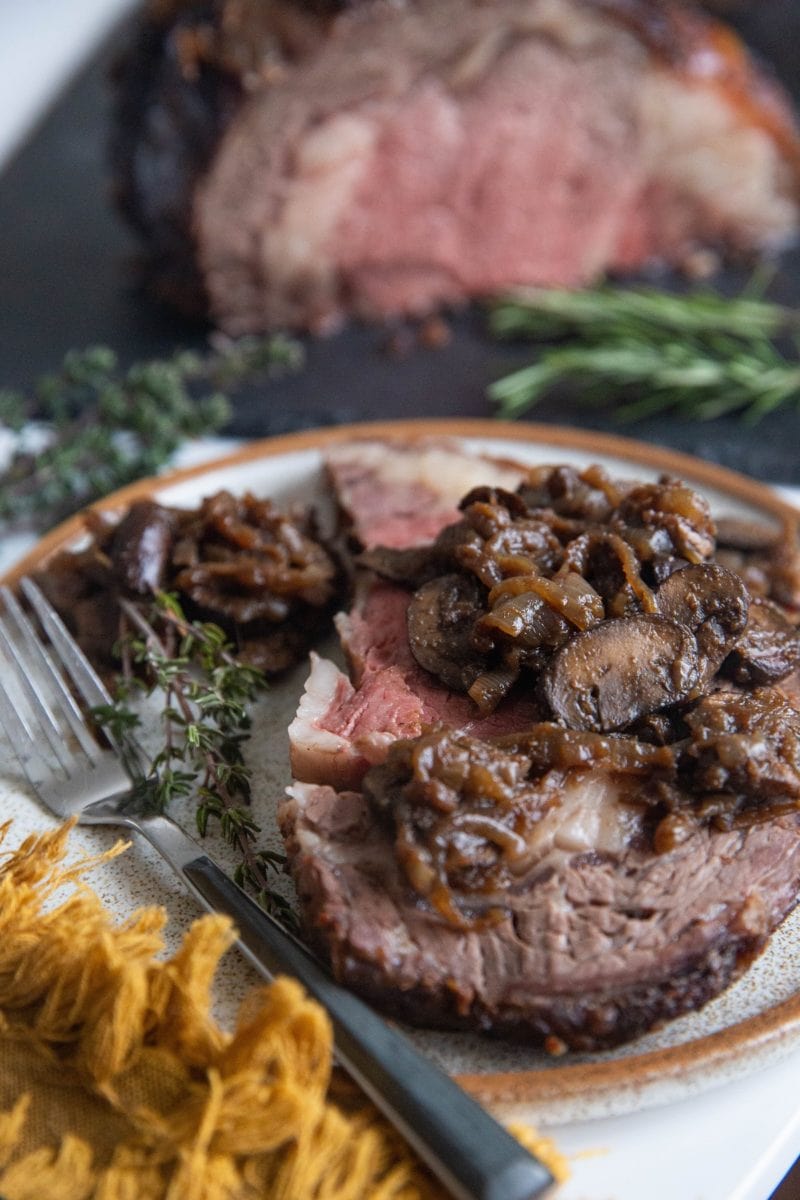
What is Special About Prime Rib?
The intramuscular fat marbling coupled with a hefty layer of fat surrounding the roast brings incredible richness and flavor to the meat. The end result is an incredibly tender cut of beef that is plenty juicy, moist, and seeping with flavor.
When cooked right, it melts in your mouth!
Prime Rib Vs Ribeye:
Which is better, prime rib or ribeye? Well, technically, they are the same. Prime rib is a whole beef roast containing rib bones that when cut into individual slices becomes individual ribeye steaks.
Is prime rib different from ribeye? Ribeye steaks are cut off of the prime rib roast.
So which one is better? That all depends on what you enjoy. While I love both, I personally prefer the texture of an individually cooked BBQ Ribeye Steak.
But when you aim to impress guests, this Garlic Butter Prime Rib Recipe results in the absolute best prime rib recipe that turns out perfectly cooked and designed to dazzle.
Pro Tip: Dry Brine Your Prime Rib!:
For the absolute best results, I recommend dry brining prime rib for 24 hours before you prepare it.
If you don’t have that amount of time, any amount of time will still work wonders. Even if you only have a couple of hours before you need to get the roast into the oven, that is enough time to make a difference.
All you do to dry brine prime rib is place it on a baking sheet and sprinkle the whole roast liberally with sea salt. Both fine kosher salt and coarse sea salt will work.
Transfer the salted prime rib to the refrigerator and allow it to sit open to the air for at least 1 hour, ideally 24.
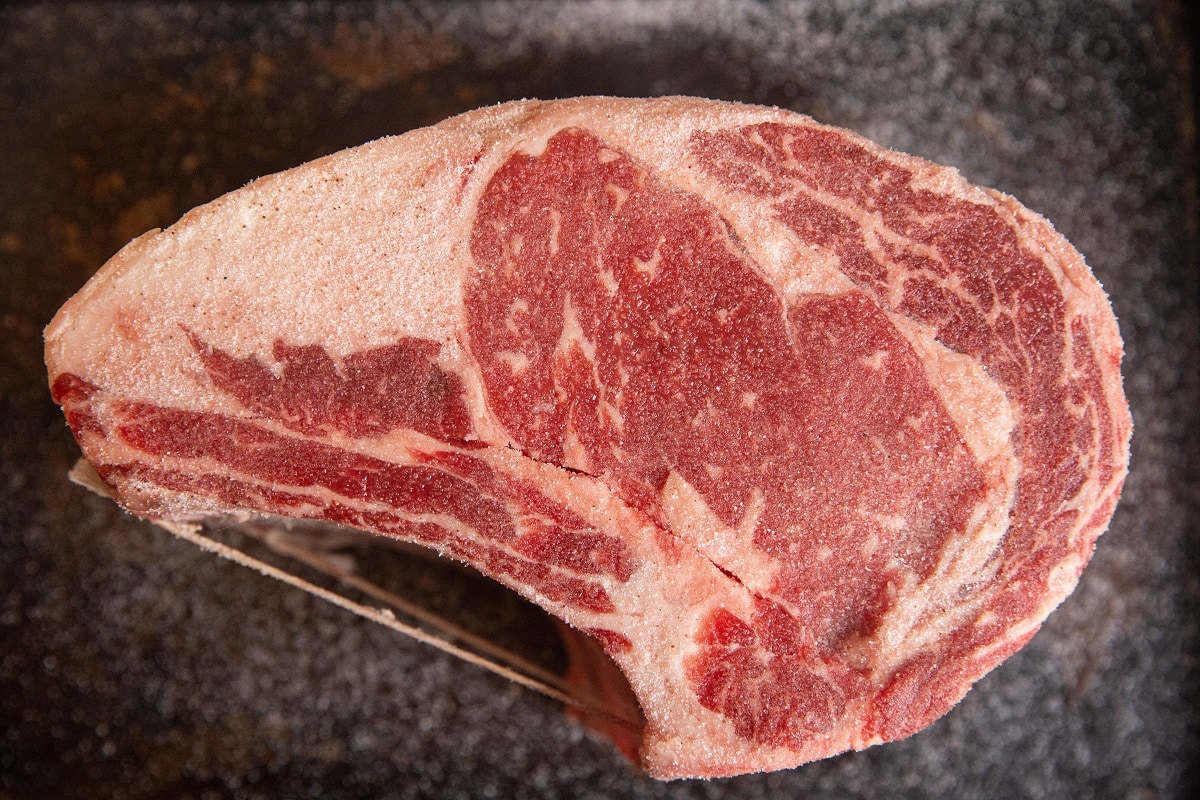
After several hours, you’ll notice the meat has pulled away from the fat slightly and the flesh is a deeper red.
This means the salt has penetrated deep into the meat, thereby seasoning it nicely and also tenderizing it for the most flavorful prime rib.
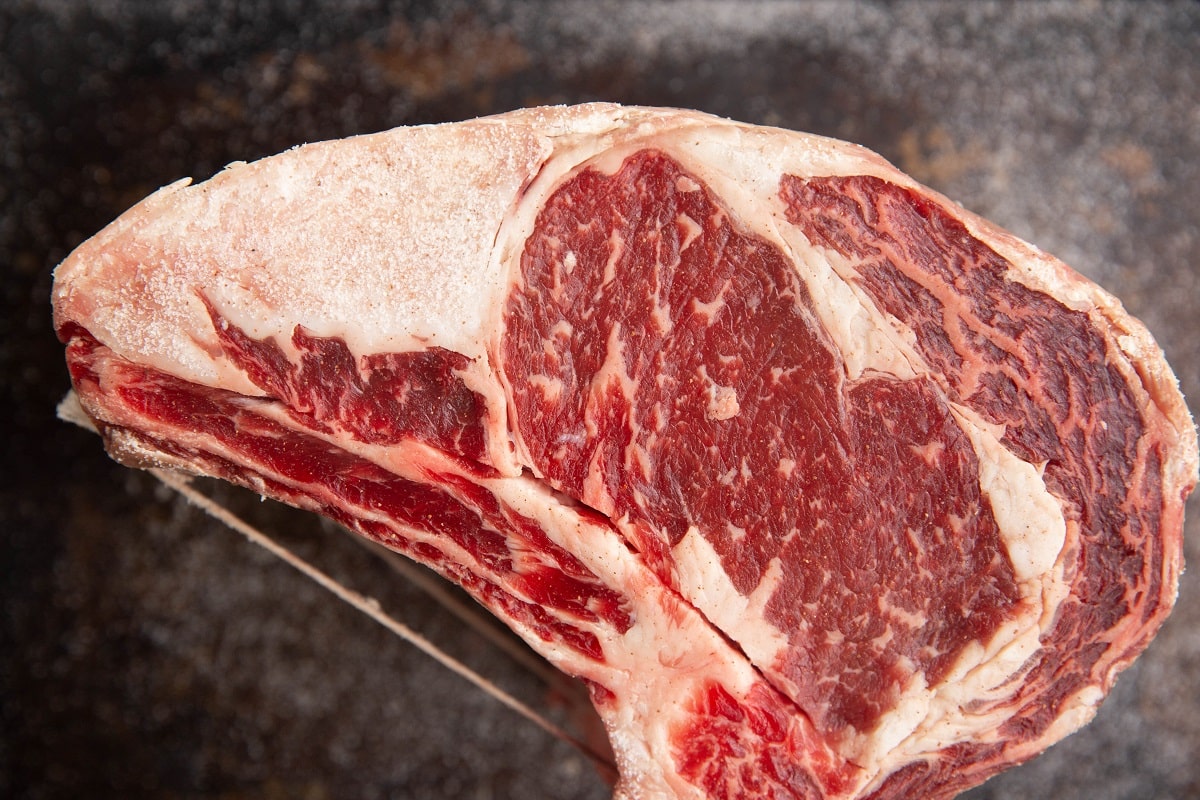
About 10-20 minutes before baking, take the prime rib out of the refrigerator, transfer it to a roasting pan, and allow it to sit at room temperature.
Ingredients for Garlic Herb Compound Butter:
All we need to make a delicious garlic herb butter is good quality butter, fresh garlic, garlic powder, fresh rosemary, fresh thyme, sea salt, and black pepper.
I use grass-fed unsalted butter. European style butter works great, too. You can replace the fresh herbs with dried herbs if you’d prefer.
Now that we’ve covered some important points, let’s make the best garlic butter prime rib!
How to Make Garlic Butter Prime Rib:
Step One: Make the Garlic Compound Butter
If you have the time, bring the prime rib out of the refrigerator to sit at room temperature for 15 to 30 minutes prior to baking.
Preheat the oven to 500 degrees Fahrenheit. The high temperature will sear the outside of the roast so that the fat becomes nice and crispy and it will also lock moisture into the meat.
Use paper towels to pat any excess moisture off of the prime rib and transfer it to a large roasting pan or baking dish.
Combine the softened butter, minced garlic, garlic powder, and fresh herbs in a small bowl and stir well until combined.
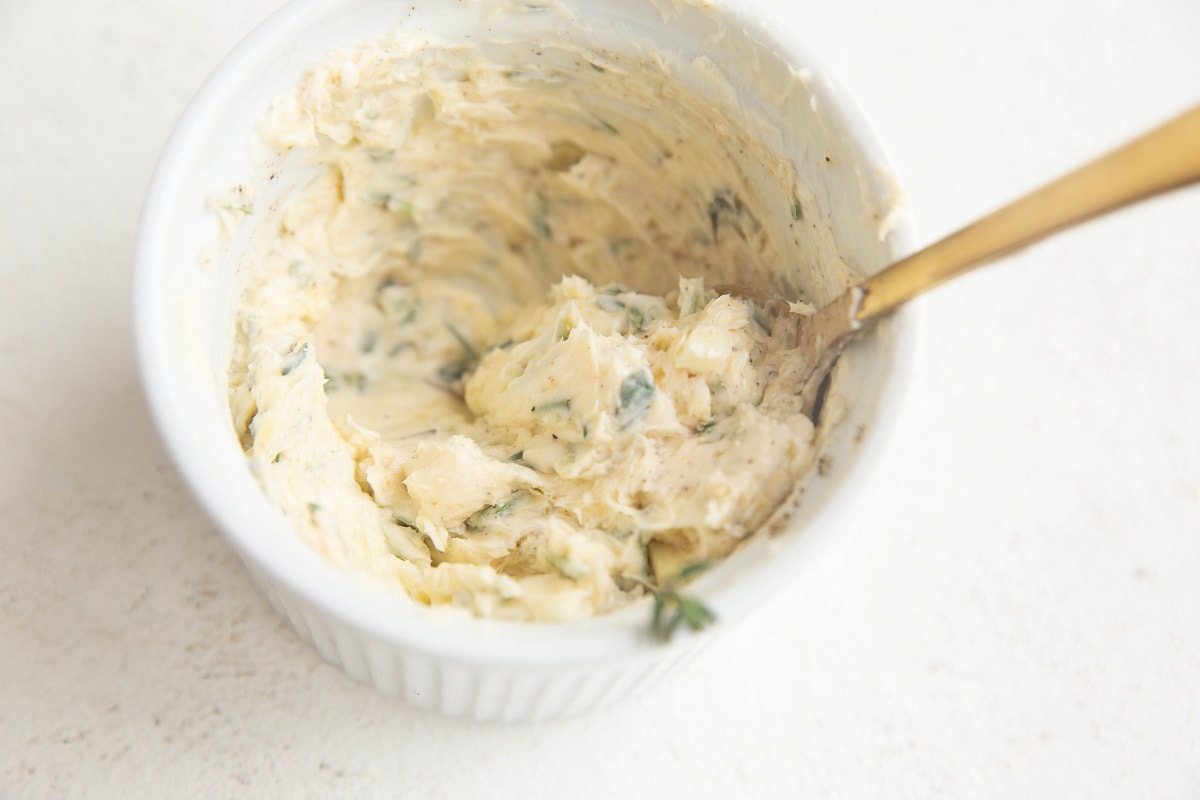
Rub the garlic butter mixture over the entire prime rib. Stand the prime rib upright so that the fat cap is pointing up.
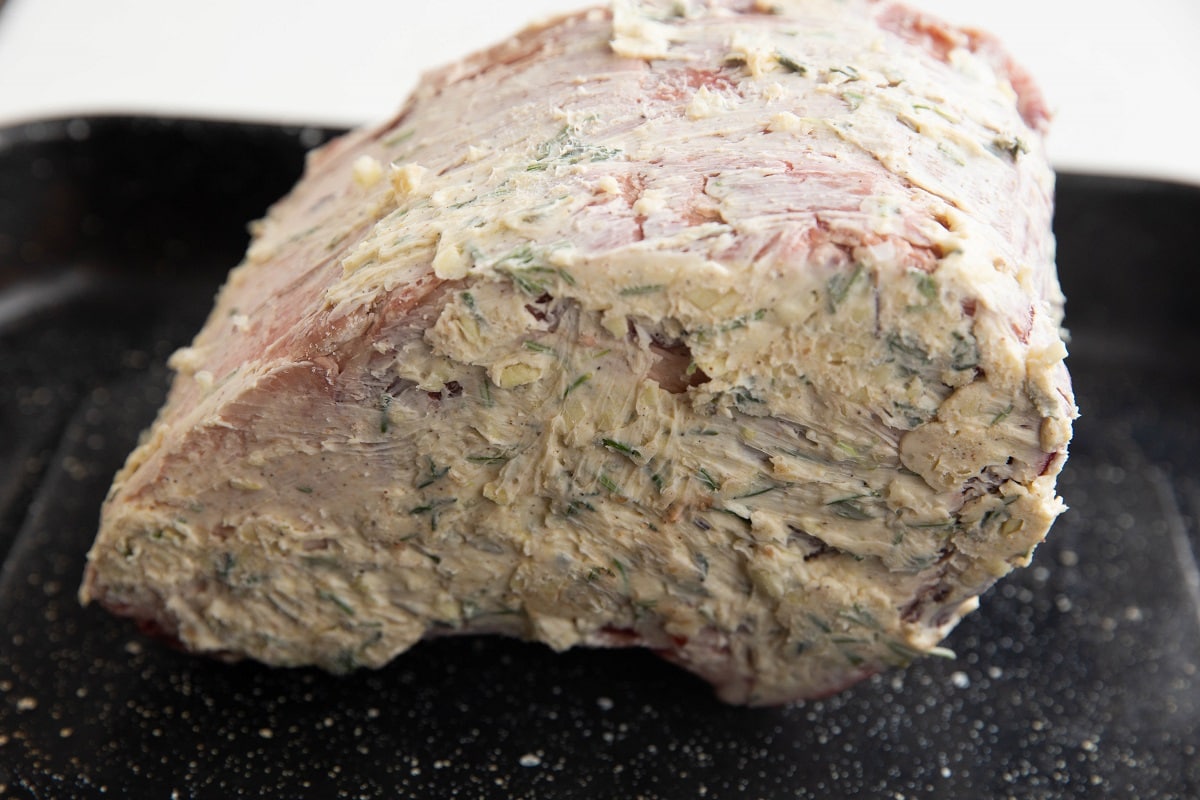
Step 2: Sear the Meat at a High Temperature
Roast at 500 degrees for 5 minutes per pound to get a golden brown crust on the outside. This process produces that crispy fat cap and also locks moisture inside the of the meat.
For a 5-pound prime rib, this will take about 25 minutes.
If you’re concerned about the meat getting too dark on the outside, you can reduce this to 2 minutes per pound.
Note: You can also reverse sear the prime rib. This means you would start by roasting at the lower temperature of 300 degrees, then sear at 500 degrees at the end of cooking.
If you choose to go this route, I recommend baking to an internal temperature of 100 to 115 degrees F, then searing until your desired internal temperature is achieved.
Step 3: Continue Roasting at a Lower Temperature
Open the oven door to let out some heat and lower the oven temperature to 300 degrees F.
Continue baking until the roast reaches your desired level of doneness. Aim for 120 to 125 degrees F for rare, 130 to 135 degrees F for medium-rare, or 138 to 140 degrees F for medium.
For a 5-pound prime rib, this will require just under two hours of roasting for medium-rare prime rib.
Do note that the residual heat inside of the roast will continue cooking the meat another 5 to 10 degrees as it rests. Pull the meat out around 115 degrees for rare or 125 degrees for medium rare for perfect prime rib.
To check the temperature of the meat, insert an instant read thermometer into the thickest part of the roast and wait until the numbers stop moving to get an accurate read.
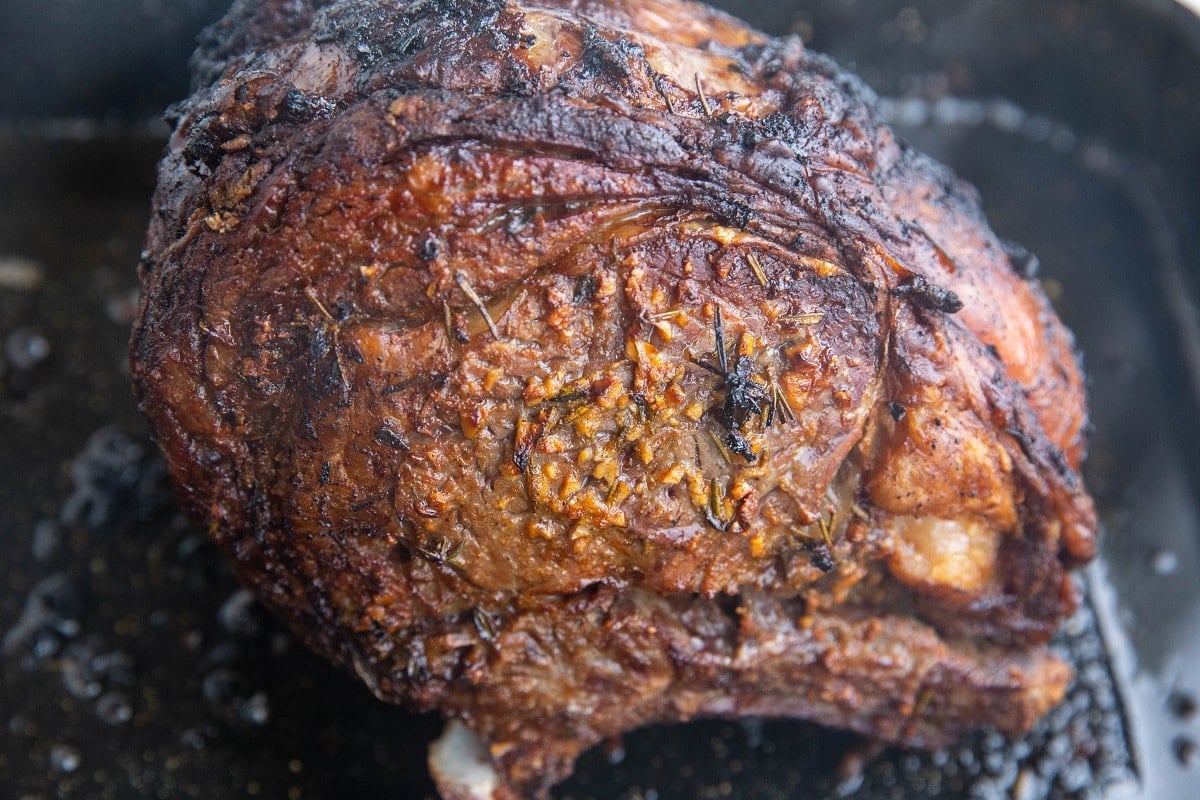
Inserting the thermometer into the side of the roast will give you an inaccurate read, as the sides will always be hotter than the center.
For this reason, inserting the instant-read thermometer into the very center of the roast is the best way of checking the temperature.
Step 4: Let the Meat Rest
Once the meat has reached your desired level of doneness, pull it out of the oven and let the meat rest for at least 15 minutes.
If you’d like, you can cover the roast in aluminum foil as it rests. I leave it uncovered.
As the prime rib rests, you can prepare an au jus or gravy from the drippings in the bottom of the roasting pan.
Transfer the meat to a cutting board and use a sharp knife to slice it into steaks.
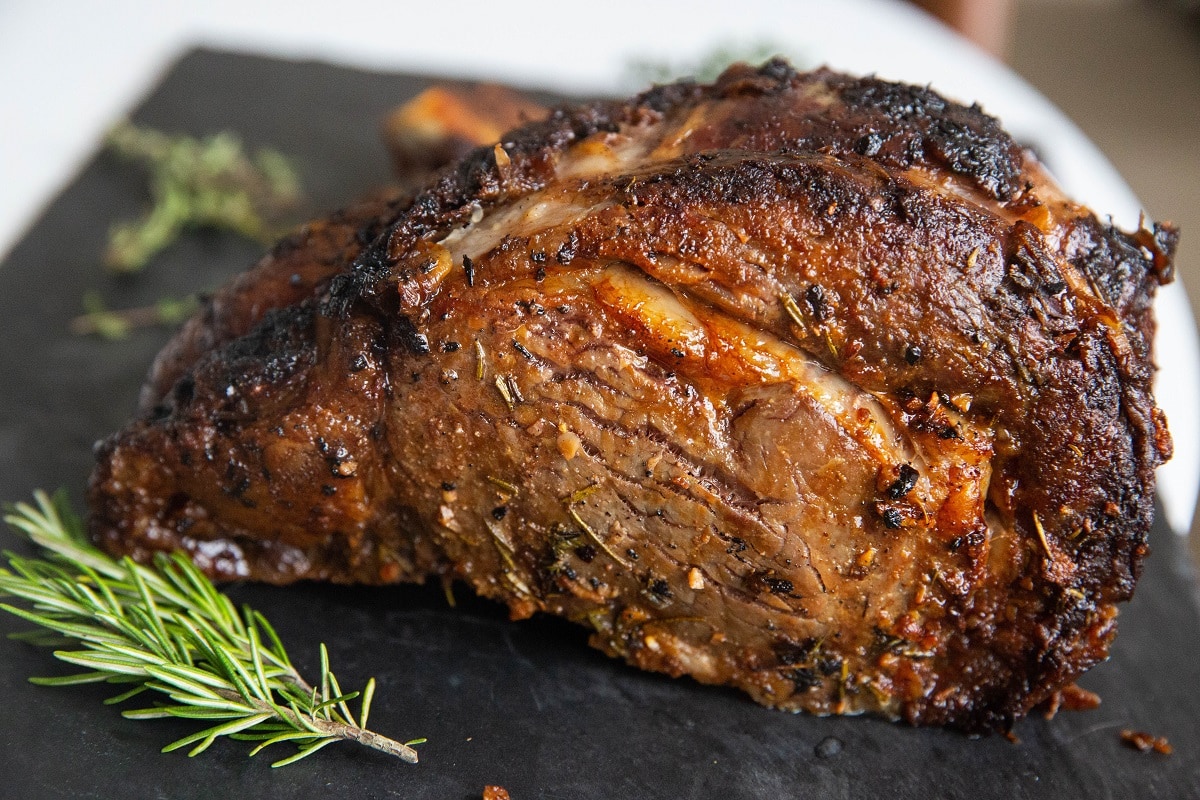
How to Cut Prime Rib:
If you have a bone-in rib roast, slice the ribs off of the roast prior to cutting it into steaks. Use a sharp knife and carve close to the bones so that you don’t lose much meat to the bone.
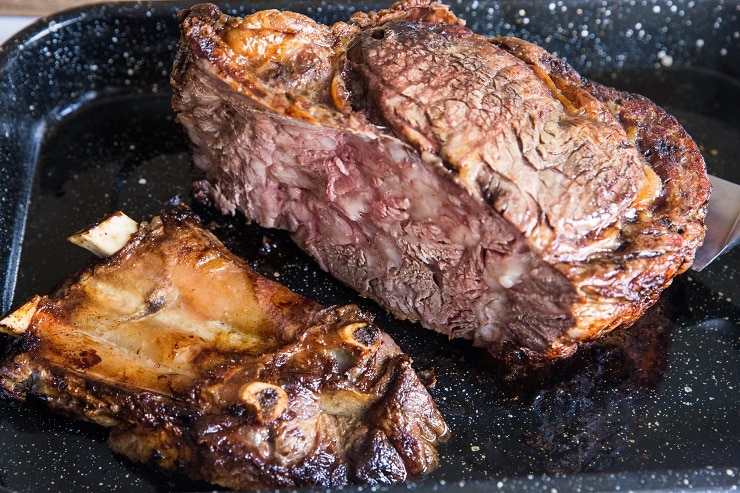
After removing the bones, stand the roast back up and cut against the grain. You can slice thin layers or cut the roast into steaks.
What to do with prime rib bones? Serve the ribs to your guests or save them for soup.
Serve prime rib with your favorite side dishes, and enjoy! I love serving prime rib (and any type of steak) with Caramelized Onions and Mushrooms.
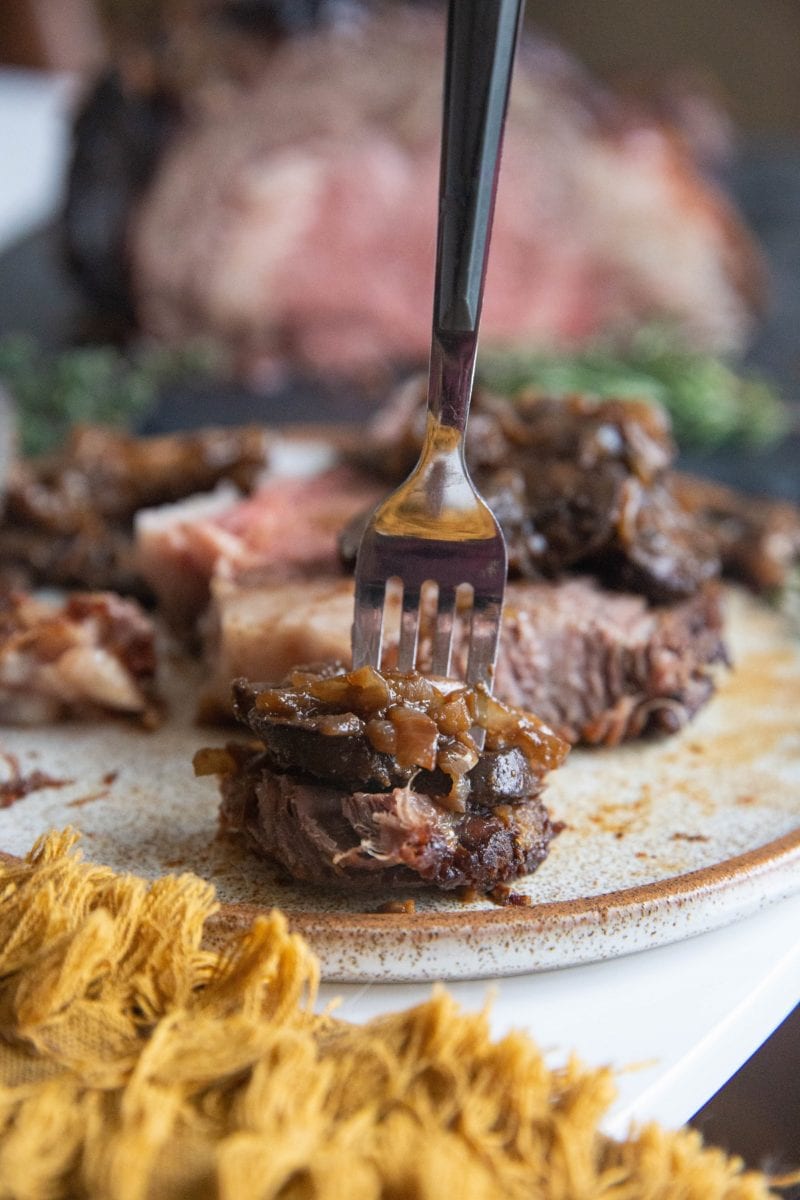
Green beans, brussels sprouts, and red wine are marvelous pairings to this garlic butter herb prime rib.
Store any leftovers in an airtight container in the refrigerator for up to 5 days.
Use leftover prime rib in my Steak Salad with Berries Avocado and Goddess Dressing.
Final Cooking Temperatures for Prime Rib:
- Rare: 120 degrees F
- Medium-rare: 130 to 135 degrees F
- Medium: 138 to 140 degrees F
- Medium-well: 140 to 145 degrees F
- Well done: above 145 degrees F
How Long To Cook Prime Rib:
There are four factors that impact how long it takes to cook prime rib. The size of your roast, the temperature of the roast going into the oven (whether it’s at room temperature or fresh out of the refrigerator), the oven temperature you choose, and your target temperature of the meat (target doneness).
In this sense, whether or not you sear the meat at 500 degrees first will impact the amount of time it takes to finish the roast.
Searing for a full 5 minutes per pound will result in lower bake times.
Here are the general recommended roast times per pound of prime rib.
Rare Prime Rib: 11 to 14 minutes per pound of prime rib or until the internal temperature reaches 120 to 125 degrees.
Medium-Rare Prime Rib: 15 to 18 minutes per pound or until the meat is 130 to 135 degrees F.
Medium Prime Rib: 18 to 21 minutes per pound or until it reaches an internal temperature of 138 to 140 degrees F.
If you own ovenproof meat thermometer, now is a great time to put it to use so that you always have an accurate temperature read on the inside of the meat to end up with the perfect doneness.
The exact cooking time for the perfect prime rib is highly subjective based on personal taste. For this reason, be sure to use a thermometer to achieve your desired result!
If you’re looking for more impressive beef recipes, also try my Beef Tenderloin Recipe or my Slow Cooker Beef Short Ribs.
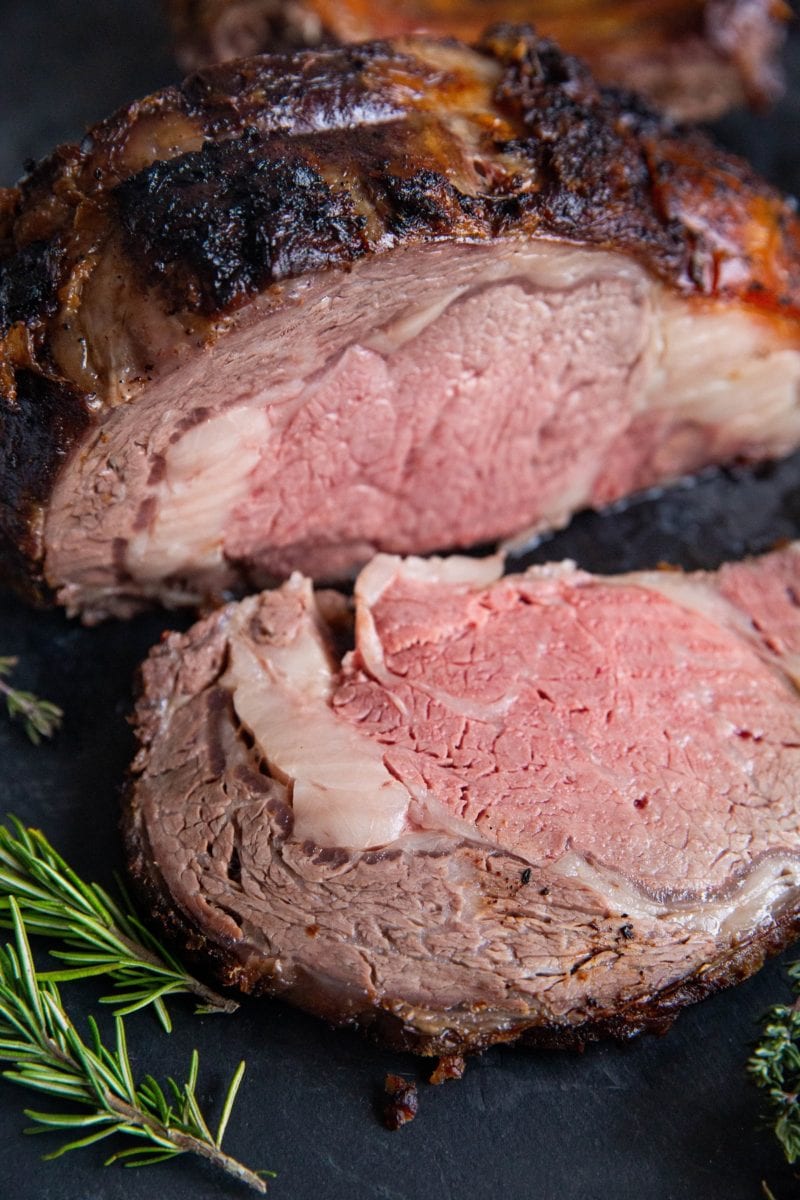
What To Serve With Garlic Herb Prime Rib:
Because prime rib is so rich, I always recommend serving it with light and refreshing side dishes in addition to some form of potato side dish. Here are my top suggestions.
- Caramelized Onion and Roasted Garlic Buttermilk Mashed Potatoes with Parmesan
- Smashed Sweet Potatoes with Garlic Butter and Honey
- The Best Broccoli Salad
- Big Batch Roasted Vegetables
- Greek Pasta Salad
- Roasted Beet and Arugula Salad with Maple Balsamic Vinaigrette
- Sauteed Brussel Sprouts with Butter and Garlic
Leave a comment below letting us know what sides your family enjoys with your standing rib roast!
Enjoy this delicious prime rib roast recipe with your loved ones on any special occasion or holiday dinner!
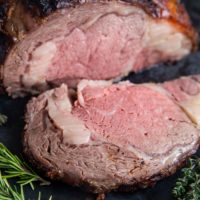
Garlic Butter Prime Rib
Ingredients
- 1 5-pound Bone-In Prime Rib Roast
- 1 cup unsalted butter*
- 5 cloves garlic minced
- 1 teaspoon garlic powder
- 1/2 tsp black pepper
- 1 Tbsp fresh rosemary chopped**
- 1 Tbsp fresh thyme chopped**
- 1 Tbsp sea salt***
Instructions
- Preheat the oven to 500 degrees Fahrenheit.
- Use paper towels to pat any excess moisture off of the prime rib and transfer it to a large roasting pan or baking dish.
- Combine the softened butter, minced garlic, garlic powder, and fresh herbs in a small bowl and stir well until combined.
- Rub the garlic butter mixture over the entire prime rib. Stand the prime rib upright so that the fat cap is pointing up.
- Roast at 500 degrees for 5 minutes per pound. For a 5-pound prime rib, this will take 25 minutes.
- Open the oven door to let out some heat and lower the oven temperature to 300 degrees F.
- Continue baking until the internal temperature reaches 120 to 125 degrees F for rare, 130 to 135 degrees F for medium-rare, or 138 to 140 degrees F for medium. For a 5-pound prime rib, this will require just under two hours of roasting for medium-rare prime rib.
- To check the temperature of the meat, insert an instant read thermometer into the thickest part of the roast and wait until the numbers stop moving to get an accurate read.
- Once the meat has reached your desired level of doneness, pull it out of the oven and let the meat rest for at least 15 minutes. As the prime rib rests, you can prepare an au jus or gravy from the drippings in the bottom of the roasting pan.
- Transfer the meat to a cutting board and use a sharp knife to slice it into steaks. If you have a bone-in rib roast, slice the ribs off of the roast prior to cutting it into steaks.
- Serve prime rib with your favorite side dishes, and enjoy!
Video
Notes
Nutrition
This post contains affiliate links, which means I make a small commission off items you purchase at no additional cost to you.
I originally shared this recipe December 22, 2022. I updated some information and added a video but the recipe itself remains the same.
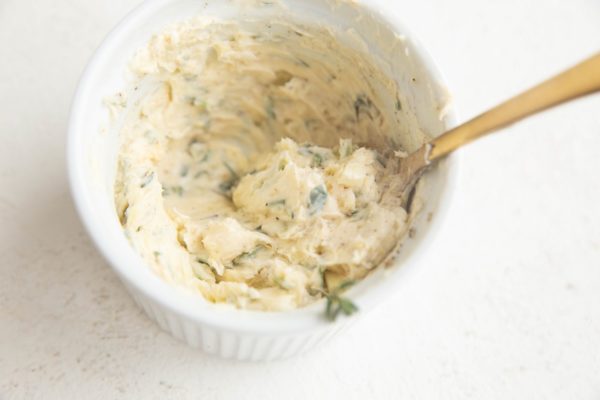
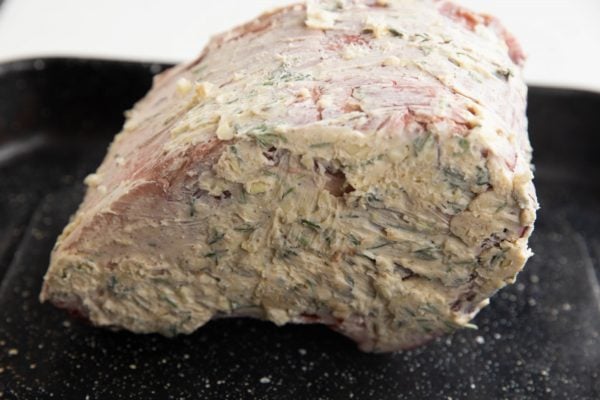
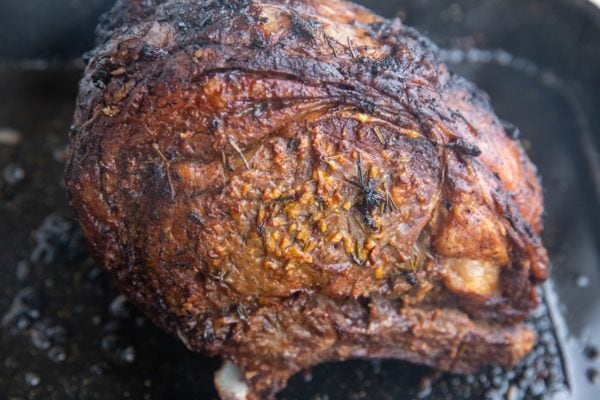
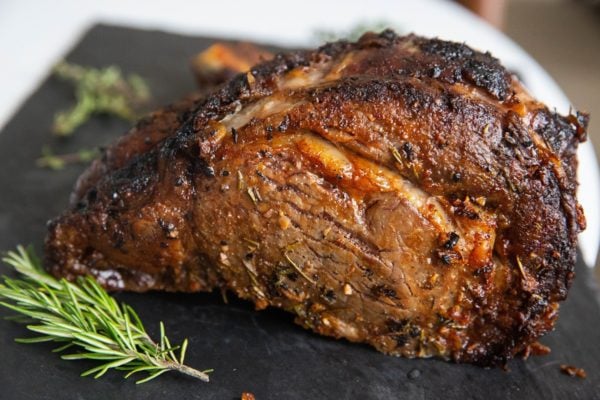
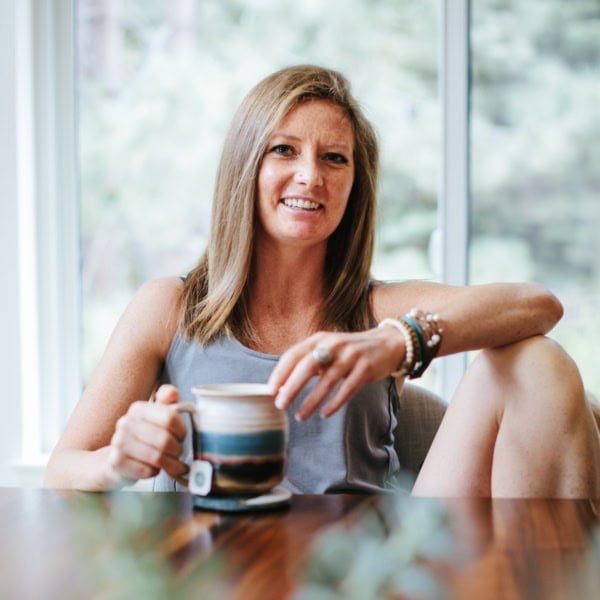
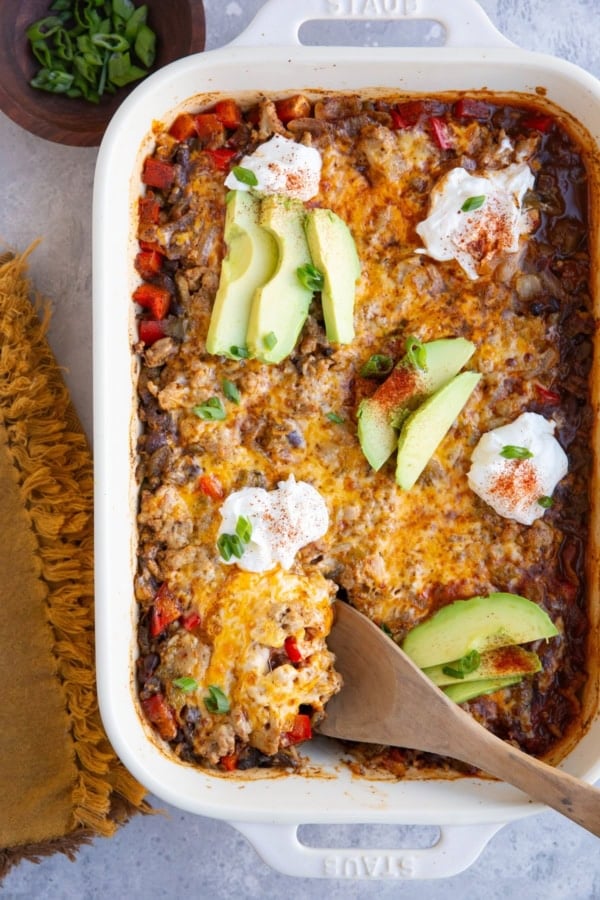
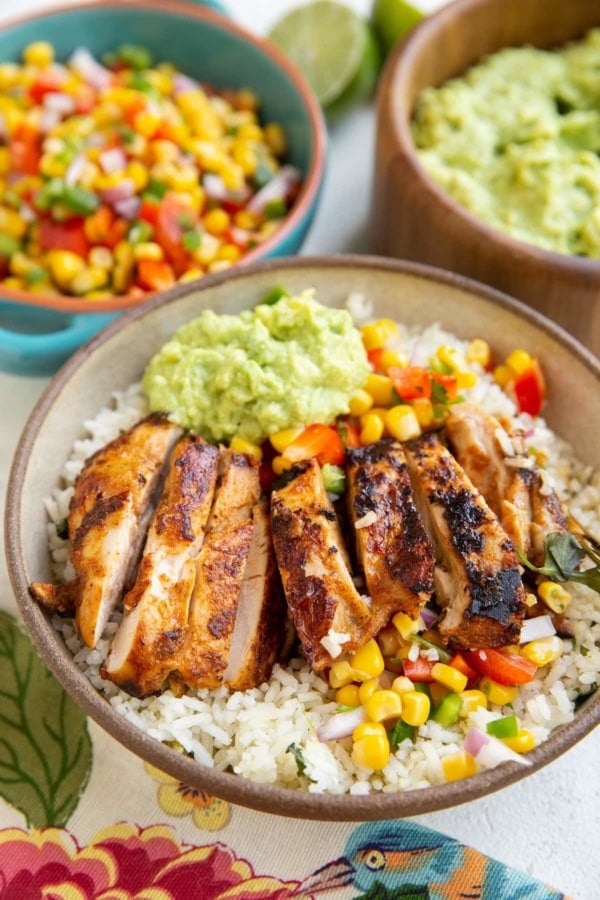
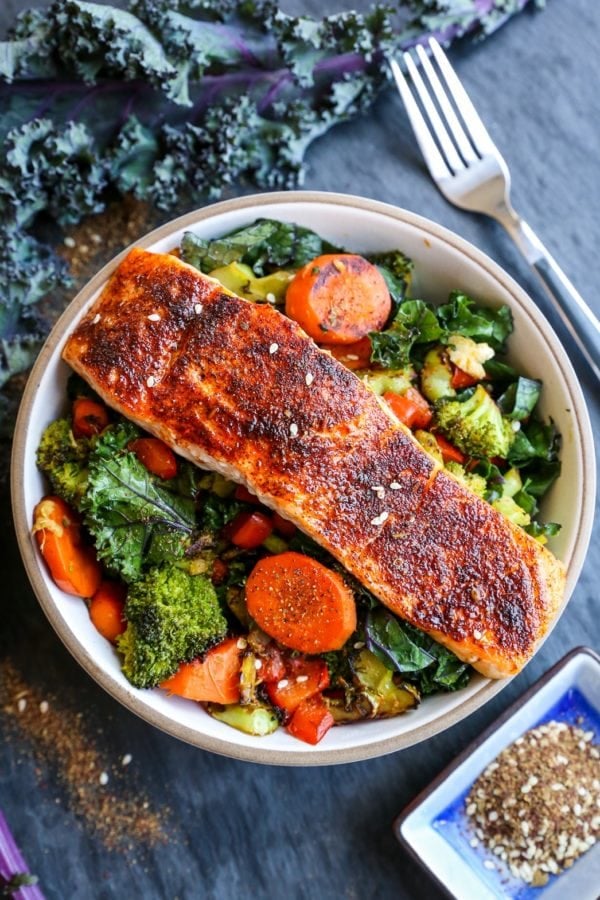
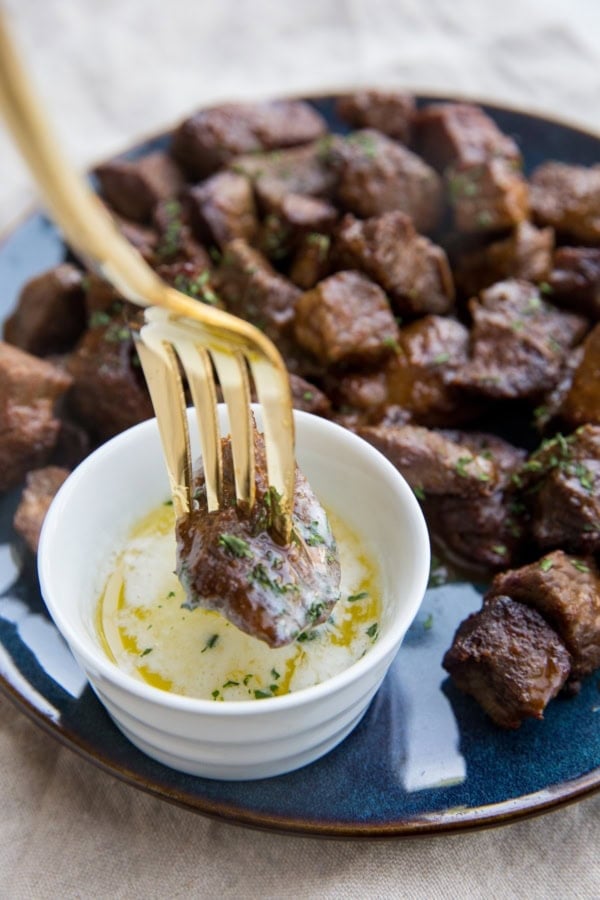









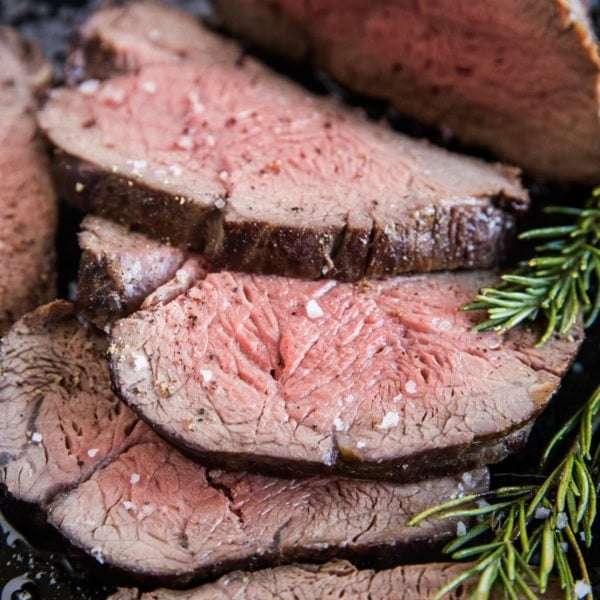
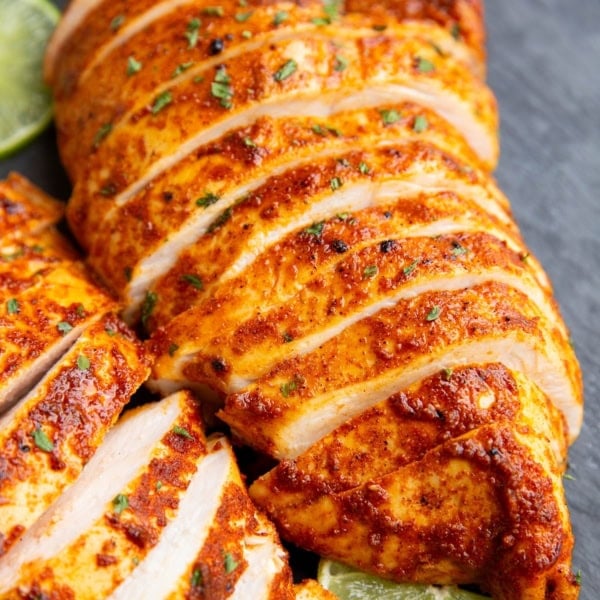
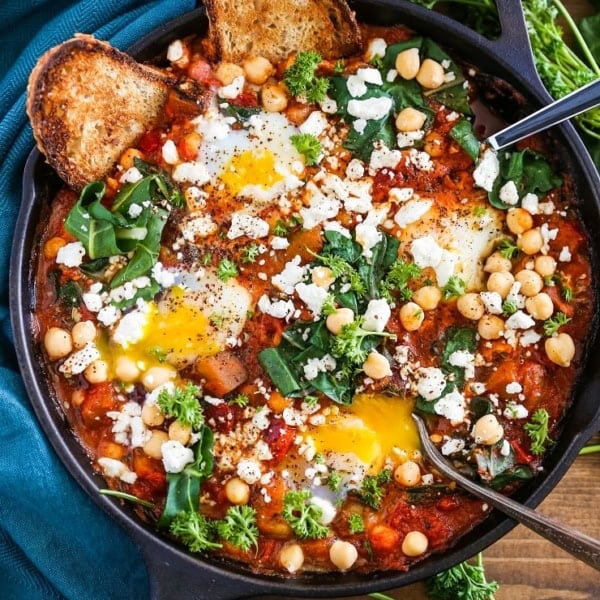
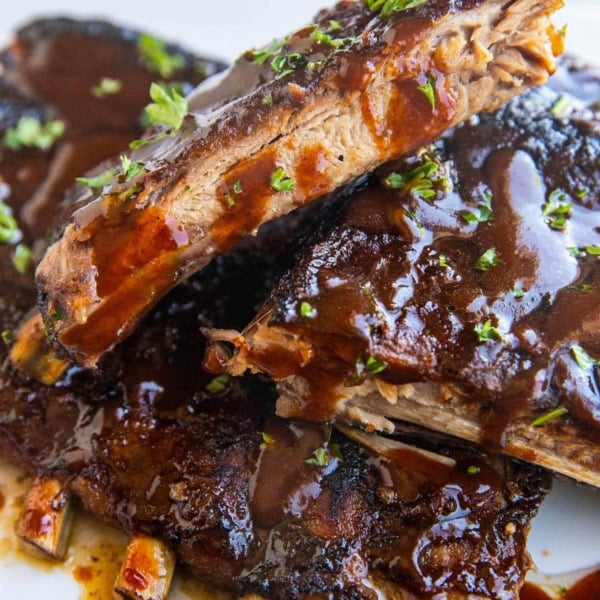
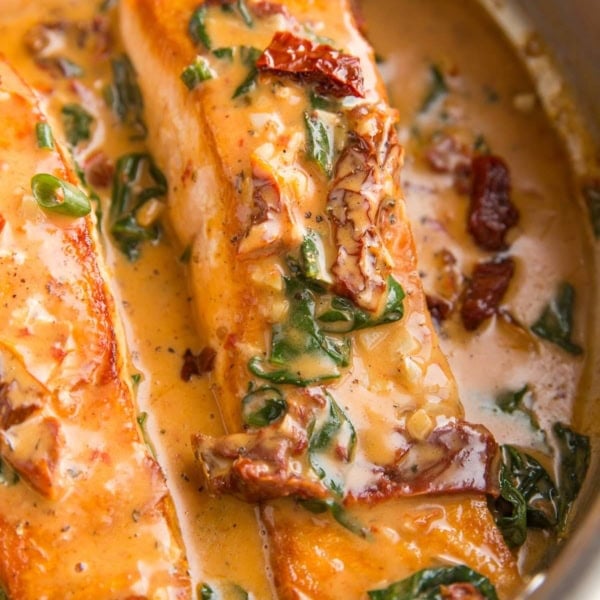
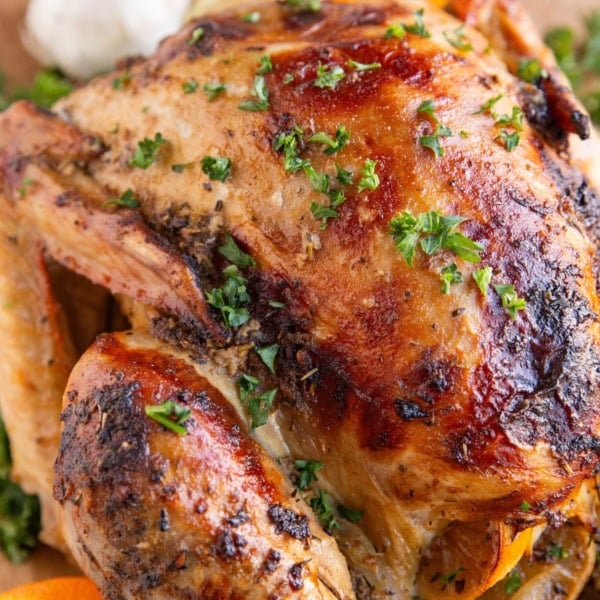
I swear….You’re an angel. How did you know I needed this? I got a 8 pounder on a special today. Merry Christmas to you! …and “Thank You”!
You’re too sweet, Sheri!! I’m happy the recipe comes at a good time for you! Merry Christmas to you too – I hope your family has a lovely holiday and enjoys the prime rib! xoxo
Do you cook with top on or off on the roasting pan
@Mary Tidswell,
Hi Mary! Top off 🙂 Hope you enjoy!
How would you modify to make bone in rib roast individual ribs? I bought those to simplify cooking. Thank you!
Hi Nanette! Are they about the same thickness as steaks? Regardless, you shouldn’t need to change the instructions, except maybe the time. I haven’t done individual rib roasts but I would sear them at 500 in the oven for 5 minutes per pound (so this may just be 5 minutes in your case, depending on the weight), and check to see if they have a sear on the outside. Then bake at 300 until they reach your desired level of doneness (about 15 minutes per pound for medium-rare). The key is to keep an eye on the internal temperature using a meat thermometer. 🙂 Hope this helps! xoxo
If these are steaks, then my personal opinion is they will turn out better cooking them in a skillet than roasting them in the oven.